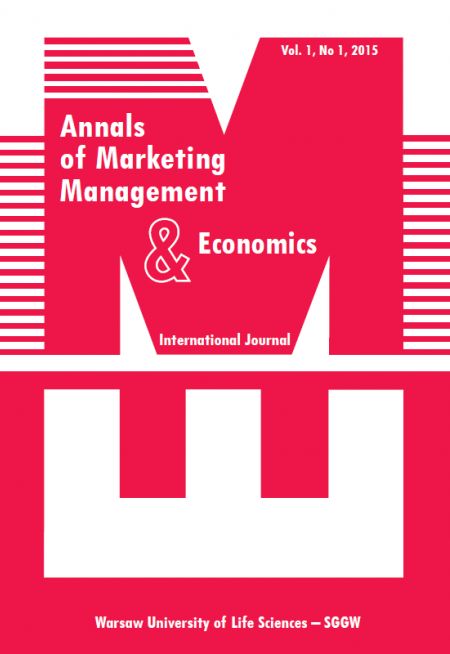Main Article Content
Article Details
Ansoff I., 1999. The new corporate strategy, St. Petersburg, PeterCombe.
Chandler A.D., 1962. Strategy and structure, Chapters in the History of Industrial Enterprise, MIT Press, Cambridge, Mass.
Dican V.L., 2013. Strategic management, Center for Educational Literature, Kyiv.
Kovalenko N.Y., Ahirbov Y.I., Serov N.A., 2008. Ekonomika sil's'koho hospodarstva (Agricultural economics) [in Russian], Yurkniha, Moscow.
Kaninsky P.K., 2003. Development of specialization and cooperation in animal agriculture in the forest-steppe zone, IAEUAAN, Kyiv.
Kareba M.I., 2012. The size of farms and diversification of their activities, Agricultural Science Journal of the Black Sea Region 2, 72-74.
Kotler P., 1990. Principles of Marketing, Progress, Moscow.
Kudenko N.V., 2006. Strategic Marketing: tutorial, KNEU, Kyiv.
LARINA Y.S., 2008. Formation and mechanisms for the implementation of marketing strategies in the agro-food subcomplex of agrarian business, Press of Ukraine, Kyiv.
Lemishko O.O., 2001. Diversification - key factor of business in the agricultural enterprises of Luhansk region, Journal of the Economy of Agro-Industrial Complex 4, 106-109.
Malik M.J., 2012. (Actual issues of diversification production in agriculture) Efficient Economy 12, retrieved from http://www.economy.nayka.com.ua/?op=1&z=1689 [accessed: 15.02.2017].
Mocherny S.V., Larina Y.S., Ustenko A.A., Yurii S.I., 2005. Economic encyclopedic dictionary, World, Lviv.
Pelykh V.V., 2014. Diversification of agricultural production: integrating villages and cities, Bulletin of the Sumy National Agrarian University 8, 226-229.
Porter M.E., 2005. On Competition, Williams, Moscow.
Tsalko O.M., 2008. The economic essence of farm diversification strategy, Ahroinkom 11-12, 82-85.
Waterman R., 1988. The Renewal Factor - How the Best Get and Keep their Competitive Edge, Progress, Moscow.
UkrLandFarming: the largest vertically integrated agricultural holding in Ukraine, retrieved from http://latifundist.com/kompanii/289-ukrlandfarming [accessed: 15.02.2017].
Downloads

This work is licensed under a Creative Commons Attribution 4.0 International License.





